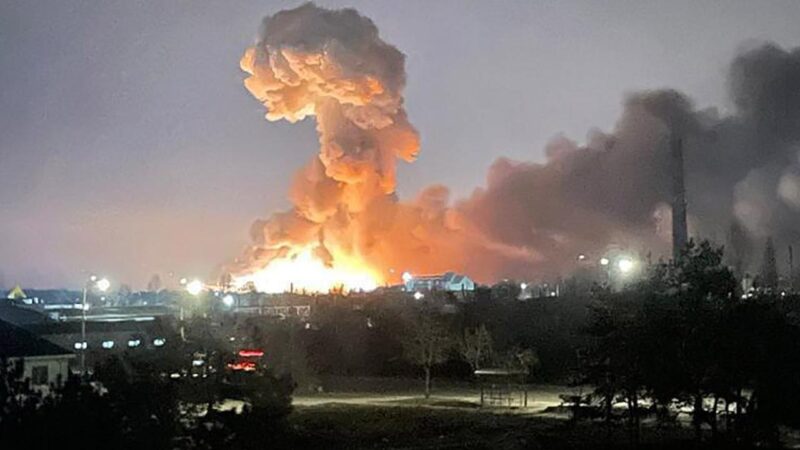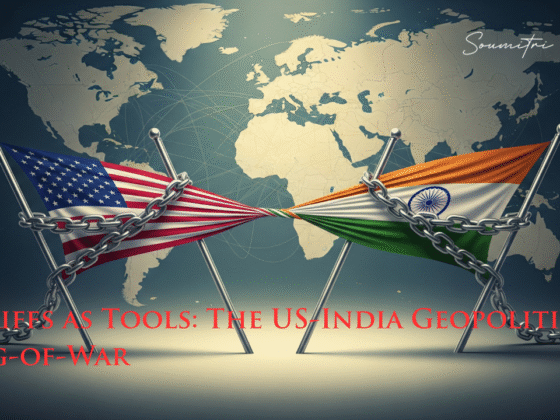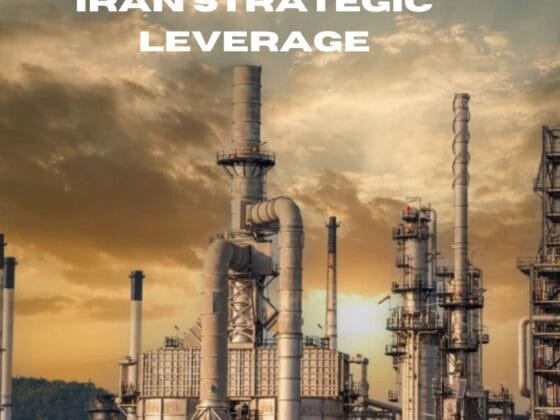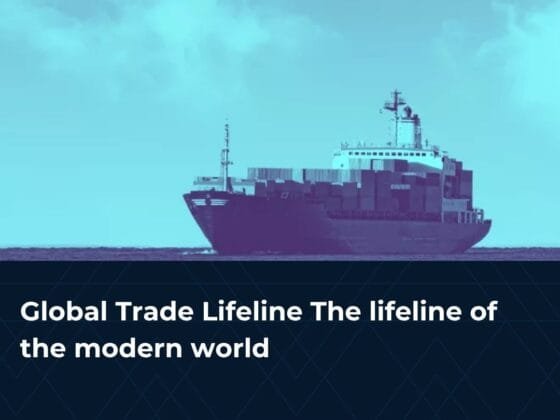After Russian-Ukrain Crisis, USA and North Korea will be at war. Is this the start of World War 3??
Introduction
Recently, tensions between North Korea and the United States have escalated. This is because recently North Korea has shown a steady increase in its nuclear and missile capabilities. As visible to the entire world, North Korea continues to develop nuclear missiles and intercontinental ballistic weapons. The US declared that it will never accept North Korea being a nuclear-armed country. This has evoked a tension of nuclear war among continents. North Korea’s aggressive behavior is well demonstrated by its bold military operations.
The escalating rhetoric from both sides has drawn the attention of the entire world leaders. After provoking the UN to impose economic sanctions, the action has affected its citizens greatly. This article describes the tension of a global unified response by the UN and NATO on the same topic. We will here discuss the roots of the conflict and what caused the conflicts in the Korean peninsula. We shall also shed light on the consequences of the previous crisis and Iran’s unified response to the breach of the nuclear deal. The article also focuses on the conclusions of the entire conflict and how it affects a normal citizen.
Nuclear Conflict
Last year, North Korea performed its 6th nuclear weapons test. This is regarded as its most powerful test till now. According to the insiders, the test claimed that the country has developed a thermonuclear or hydrogen bomb as further advancements in its nuclear program. It was clear that North Korea shows the world its ability to build more destructive and highly devastating nuclear weapons.
The Nuclear crisis just doesn’t end here. Since last year, a total of sixteen missiles tests, including a missile with the ability to carry a nuclear warhead was conducted. As a result of the test, four missiles were failed. Later in the middle of the year 2017, the first successful test was conducted for ICBM (intercontinental ballistic missile). Just 3 weeks later, another ICBM was tested. Experts believed that this missile had the potential to reach the continental United States.
During the month of August 2017, the intelligence authorities of the United Nations discovered that North Korea can resize its nuclear weapons to fit inside a missile. This fact has also been claimed by the country itself in March 2016.
In the late stages of the year 2017, North Korea conducted the test of its largest ICBM which was unseen till now.
The missile was named Hwasong-15. The country has not yet demonstrated that its nuclear missiles can reenter the Earth’s atmosphere.
The increased frequency of missile tests has drawn the attention of the United States. The US government has decided to deploy a unique anti-missile system in South Korea. This is termed as THAAD (terminal high altitude area defense) system. The defense protocol is located in the Seongju which is 150 miles away from North Korea.
Talking about other nations that has effect, the Japanese authorities together with South Korea and the United States have passed their own sanctions against North Korea. The main aim of this sanction is to target companies that are in missile and nuclear weapon development. It also targeted high-ranking individuals and income sources of the North Korean government.
The harshest sanction was passed by the UN in August 2017, targeting the most important sources of revenue including the country’s exports. The sanction also banned North Korea from sending workers abroad. In November 2017, the US pushed back North Korea as it declared it as a sponsor of terrorism and mandatory sanctions to be passed on the regime.

The North Korea Crisis
North Korea is an isolated, impoverished and asserted enemy of South Korea. South Korea has always been an important U.S. ally. As a result of that US is now committed to defending the southern part of Korea (known as the Korean republic) according to the Mutual Defense Treaty signed between the US and the Korean Republic.
To stay true this treaty, the United States had earlier 29,000 troops deployed in the Korean peninsula. In addition to this, as many as 630,000 troops were to take positions near the DMZ or Demilitarized Zone. Here, North Korea’s 1.2 million troops are also there which made the lines one of the most heavily armed borders in the world.
The North Korean crisis finds its roots in the fact that it has violated the treaty signed by continuing to perform nuclear weapons and long-range missile development tests. The development of nuclear weapons largely depends on the uranium deposit. Though North Korea’s uranium deposits and its uranium enrichment programs are unknown, the intelligence of Unites States claims that it has enough plutonium that can create possibly 60 nuclear weapons.
North Korea also maintains a missile base and research program outside its lands. The country is testing these weapons continually without regard to UN Security Council Resolutions that prohibit such kind of mass-threatening acts. As of today, North Korea has one thousand missiles of various capabilities and destruction magnitude.
Consequences of the previous crisis
The present tense situation or the crisis has its roots back in the Korean War. The war did commence in 1950 and went till 1953. After this war, South and North Korean countries signed Armistice Agreement. In recent years, North Korea has six times abandoned this agreement four or five times in the last decade.
In the year 1994, the President of United States Bill Clinton nearly came close to launching an assault attack on Yongbyon which was North Korea’s nuclear reactor. After years of crisis, North Korea traded its nuclear program for trade and economic concessions. A similar incident took place during the presidency of George W. Bush.
In ex-president Obama’s tenure, the leadership in Pyongyang had drastic changes.
This made the situation in the peninsula difficult to understand. Intelligence says that the reason for the recent increase in hostilities is miscommunication. The main cause of this is due to China, which is acting as a broker between the West and North Korea.
The consequences of the previous crisis do not end here. Notably, an American university student Otto Warmbier faced captivity in North Korea for 18 months and got the official release in June 2017. The student went into coma and died 6 days after returning to his homeland.
The introduction of THAAD is another consequence of the growing crisis. United States has deployed THAAD (Terminal High Altitude Area Defense) in South Korea. This military defense module can easily detect and destroy medium-range ballistic missiles.
Missile testing remains just one reason for provoking aggressive behavior of western countries. There have been other incitements that evoked West aggression. These include the firing of missiles over the northern islands of Japan, firing rockets on the South Korean Border in August 2015 and a major cyber attack on US-based Sony pictures in 2014.
Danger involved
With nuclear weapons involved, the danger level can never be short of extreme. The main fact that accounts for danger are that North Korea has a torpedo missile with the ability to reach Alaska. Though the missile has a long-range ability, it went through testing only once and failed. Even so, the devastating combination of warheads like ICBM and nuclear weapons accounts for a worrying danger.
The danger does not only encompass the United States but is affecting the entire Asia-Pacific region. The stability of the region through North Korea’s rhetoric acts is greatly experiencing a massive level of disturbance. The Kaesong industrial region acts as a key manufacturing base for South and North Korea. The region still remains closed as North Korea dismissed the border access of South Korea’s border to several factories.
The dangers of the current crisis also include the disturbance in the relationship between US and China. China is may look forward to helping North Korea in the past. If it still allies with the country, it could bitter its relationships with United Nations.
The main threat remains that persists here is that if North Korea is able to do nuclear tests, the stability in the Korean peninsula can witness grave disturbance claiming millions of lives.
To be continued
We are sorry as we could not satisfy your curious hormones totally in this blog as it is incomplete. But don’t worry, part 2 is coming soon. We shall talk more about the UN’s response, the global acts and NATO’s plea. More political drama is to be unfolded in the next part. Keep vising our blog section to check for the latter half of this debatable topic

 Add to favorites
Add to favorites








